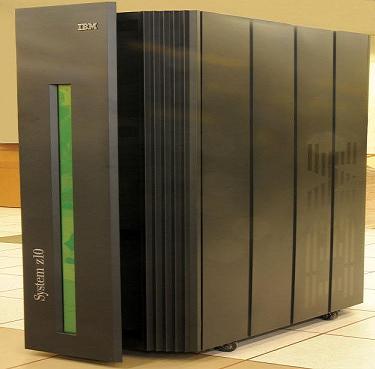| |
z/OS Tracing
 Please! Verify all details or suggestions with the appropriate vendor and / or vendor's manuals. Please! Verify all details or suggestions with the appropriate vendor and / or vendor's manuals.
Analyzing Traces
z/OS V1R12.0 MVS Interactive Problem Control System (IPCS) User's Guide
SA22-7596-07
MVS™ has a number of tracing facilities. The system saves these traces
in storage buffers and can, for traces from the generalized tracing
facility (GTF) or component trace, write the trace records to data sets.
Using IPCS you can format the entries of any trace in a dump or trace
data set. You can also do the following with GTF and component trace
records:
- Selectively format records without deleting the unformatted data from the buffer or dump
- Find the system and time stamp for each record.
- Mix formatted GTF and component trace records without combining the unformatted data.
- Reduce the number of records in a trace data set
- Extract trace buffers from dumps
- Combine a GTF or component trace records into a single data set from multiple trace data sets.
Website
Type of traces
System trace
System trace provides an ongoing record of hardware events and
software events occurring during system initialization and operation.
The system activates system tracing at initialization, which runs
continuously, unless your installation has changed the IBM-supplied
system tracing. After system initialization, you can use the TRACE
operator command on a console with master authority to customize system
tracing.
System trace writes trace data in system trace tables in the trace
address space. System trace maintains a trace table for each processor.
Because system trace usually runs all the time, it is very useful for
problem determination. While system trace and the generalized trace
facility (GTF) lists many of the same system events, system trace also
lists events occurring during system initialization, before GTF tracing
can be started. System trace also traces branches and cross-memory
instructions, which GTF cannot do.
Website
Master trace
Master trace is a diagnostic aid that maintains a trace table
of console messages in virtual storage. When master trace is active,
the master trace table is embedded in dumps that have the TRT option or
contain the master scheduler's private address space. Master trace can
eliminate the need to submit a portion of the system log to IBM® if
there are problems in message processing. It also can ensure that the
messages accompanying a dump are the ones that correspond to the
problem. The TRACE command controls master trace. For a more detailed
description of master trace, see z/OS MVS Diagnosis: Tools and Service Aids.
Website
Component trace
Component trace is a diagnostic aid that system programmers
can use to trace the action of certain system components. Component
trace enables the programmer to use the TRACE command to start and stop
component trace. The components that use the component trace command
must first invoke the define component trace service and define the
name of the component requesting the service and the name of the
start/stop routine that will get control when the TRACE operator
command is issued.
Website
Transaction trace
Transaction trace provides a consolidated trace of key events
for the execution path of application or transaction type work units
running in a multi-system application environment. By tracing the path
of a work unit running in a single system, or (more importantly) across
systems in a sysplex environment, that is being processed by
multi-system transaction servers, subsystem interfaces, and resource
managers, transaction trace enables a system programmer to debug
problems in those environments.
The essential task of transaction trace is to aggregate data showing
the flow of work between components in the sysplex that combine to
service a transaction. Transaction trace traces events such as
component entry, exit, exceptions and major events such as COMMIT, and
ROLLBACK. Do not use transaction trace as a component tracing facility.
Website
Generalized trace facility (GTF)
The generalized trace facility (GTF) is a service aid you can
use to record and diagnose system and program problems. GTF is part of
the MVS system product, and you must explicitly activate it by entering
a START GTF command.
Use GTF to record a variety of system events and program events on all
of the processors in your installation. If you use the IBM-supplied
defaults, GTF lists many of the events that system trace lists, showing
minimal data about them. However, because GTF uses more resources and
processor time than system trace, IBM recommends that you use GTF when
you experience a problem, selecting one or two events that you think
might point to the source of your problem. This will give you detailed
information that can help you diagnose the problem. You can trace
combinations of events, specific incidences of one type of event, or
user-defined program events that the GTRACE macro generates.
Website
GFS trace (GFS)
Starting and stopping GFS trace
z/OS V1R12.0 MVS Diagnosis Tools and Service Aids
GA22-7589-16 Website
|
|
Sponsored by
Software Diversified Services™


IBM z10
Home Page
CICS
COBOL
Dictionary
Hints / Tips
Internet
History
Mainframe Videos
Manuals
Programming
Programs
System z Academic Initiative
Sitemap
|





